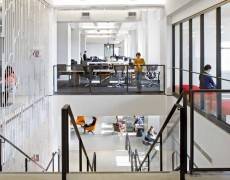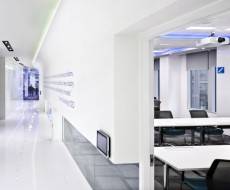March 31, 2014
HR has the most ‘can’t do’ attitude in the workplace finds poll
 Human resources people are obstructive and most likely to reject reasonable requests in the workplace, finds a new poll. Almost 18 per cent of individuals polled by conference call provider Powwownow voted the HR department as the most difficult to work with; almost double that of Finance/Accounting, the next most maligned department.Why some members of staff are so uncooperative was interpreted by respondents as due to illusions of grandeur (68%), attempts to retain power and hold others back (67%) and confusion/lack of training/lack of confidence (40%). Unhelpfulness does not go unpunished it seems as the majority of respondents (53%) thought that unproductive or obstructive employees are more prone to bullying in the workplace. Those who encounter such unhelpfulness admitted to being driven to consider screaming out of sheer frustration (40%) or even seek new employment (36%) rather than speaking with their superior (30%) about an obstructive colleague. (more…)
Human resources people are obstructive and most likely to reject reasonable requests in the workplace, finds a new poll. Almost 18 per cent of individuals polled by conference call provider Powwownow voted the HR department as the most difficult to work with; almost double that of Finance/Accounting, the next most maligned department.Why some members of staff are so uncooperative was interpreted by respondents as due to illusions of grandeur (68%), attempts to retain power and hold others back (67%) and confusion/lack of training/lack of confidence (40%). Unhelpfulness does not go unpunished it seems as the majority of respondents (53%) thought that unproductive or obstructive employees are more prone to bullying in the workplace. Those who encounter such unhelpfulness admitted to being driven to consider screaming out of sheer frustration (40%) or even seek new employment (36%) rather than speaking with their superior (30%) about an obstructive colleague. (more…)























March 28, 2014
Google’s new Amsterdam office exposes Tech’s youthful obsessions
by Mark Eltringham • Comment, Technology, Workplace design
All images © Alan Jensen and D/Dock
Back in the 1990s, when Frank Duffy was one of the august handful of people popularising notions of a changing approach to office design, he categorised four models of the workplace that he foresaw would come to reflect the work done in them, namely the den, cell, hive and club. Back then, the word ‘club’ conjured up images of gentleman’s clubs and Duffy himself described it in his 1997 book The New Office as ‘essentially an ingenious early 19th Century device to allow the kind of people who are now called networkers to share as supportive an environment as possible’, illustrating his point with an old coloured engraving of upright gents sitting around in a neo-classical, Victorian, smoke-filled room reading newspapers, sipping port and chewing the fat. Nowadays, the word club would appear to suggest something more along the lines of a youth club, as the latest pubescent design of a Google office shows us. (more…)